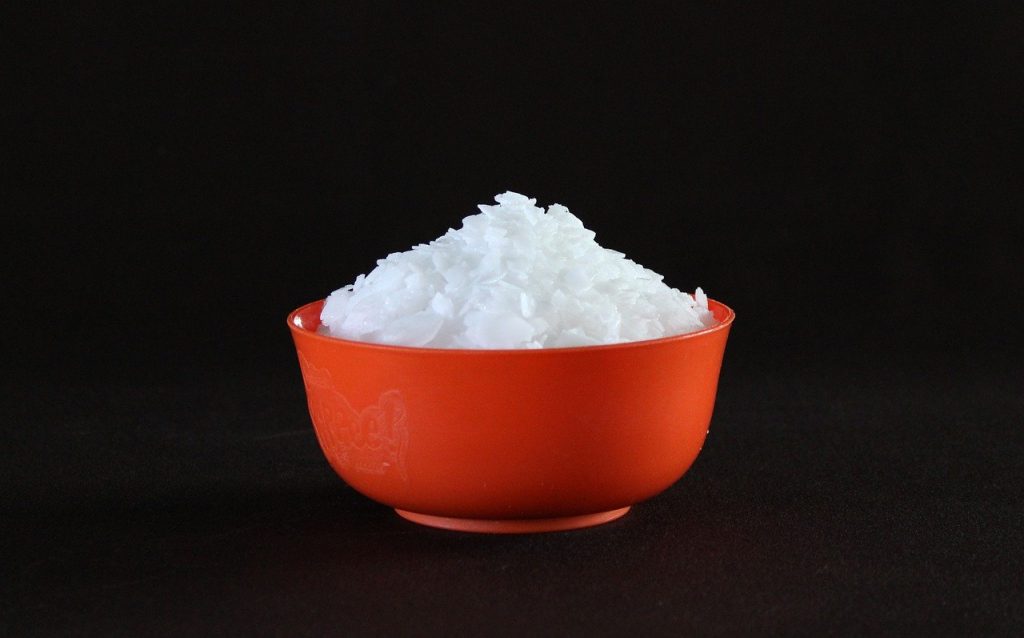Caustic soda flakes (commonly referred to as an impure sodium hydroxide solution) are a strongly alkaline compound, which implies it reacts readily with water wherever it comes in contact. Although it’s a compound used to whiten rocky surfaces (such as marble) and even to unclog non-metallic plumbing, accidents with its ingestion are still recurring by children (but are also used by suicides) and represent a toxicological stigma of products that take it in the composition. In fact, caustic soda flakes react readily with water present in living tissues, “puncturing” them and reacting with the protein matrix of cells in addition to “saponifying” the fats present. The result of this can be a chemical burn that forms severe lesions which will lead to necrosis.
Since it is ingested, its damage extends from the mouth to the esophagus and can lead to bleeding and thrombosis, as it reacts with plasma proteins and signals platelet aggregation. Since the esophagus is poorly acidic (its pH is 6.0), its neutralizing capacity of a very alkaline reagent such as caustic soda is low compared to the much more acidic stomach. This helps us to remember the compulsory countermeasures just in case of accidental ingestion of such a compound, which ought to incorporate ingestion of mild acids, for example, acetic acid, ascorbic acid, or citric acid and not cause vomiting since alkali returns “burning” as it was ingested. Likewise, it is important to utilize corticosteroids to limit the inflammatory reaction and frequently the utilization of anti H2 drugs for reflux cases.
Caustic Soda flakes (CAS No. 1310-73-2) come in packaging 1000 @ 25 kg PP/PE bags and 25 MT / 20’FCL, provided by Tradeasia International a prominent caustic soda in Indonesia.
Pathophysiological studies with caustic soda show that its ingestion promotes eosinophilic necrosis, edema, and caustic esophagitis in the first hours. Such damage is related to age, amount of intake, and concentration of caustic soda present, so tissue repair can take weeks and may even result in fibrosis of some of these. Colonization by different cellular models (such as fibroblasts) from the original matrix compromises the functioning of the tissues, and people who have suffered suffer sequelae such as esophageal stenosis.
In Brazil, some data show a regular number of accidents with caustic soda, an average of 16 cases over 5 decades (from 60 to 90) compared to the proportionally higher number of suicide cases whose average in the same period is 27. This clarifies that even more strenuous clarification and care measures are required for very alkaline compounds such as it.

